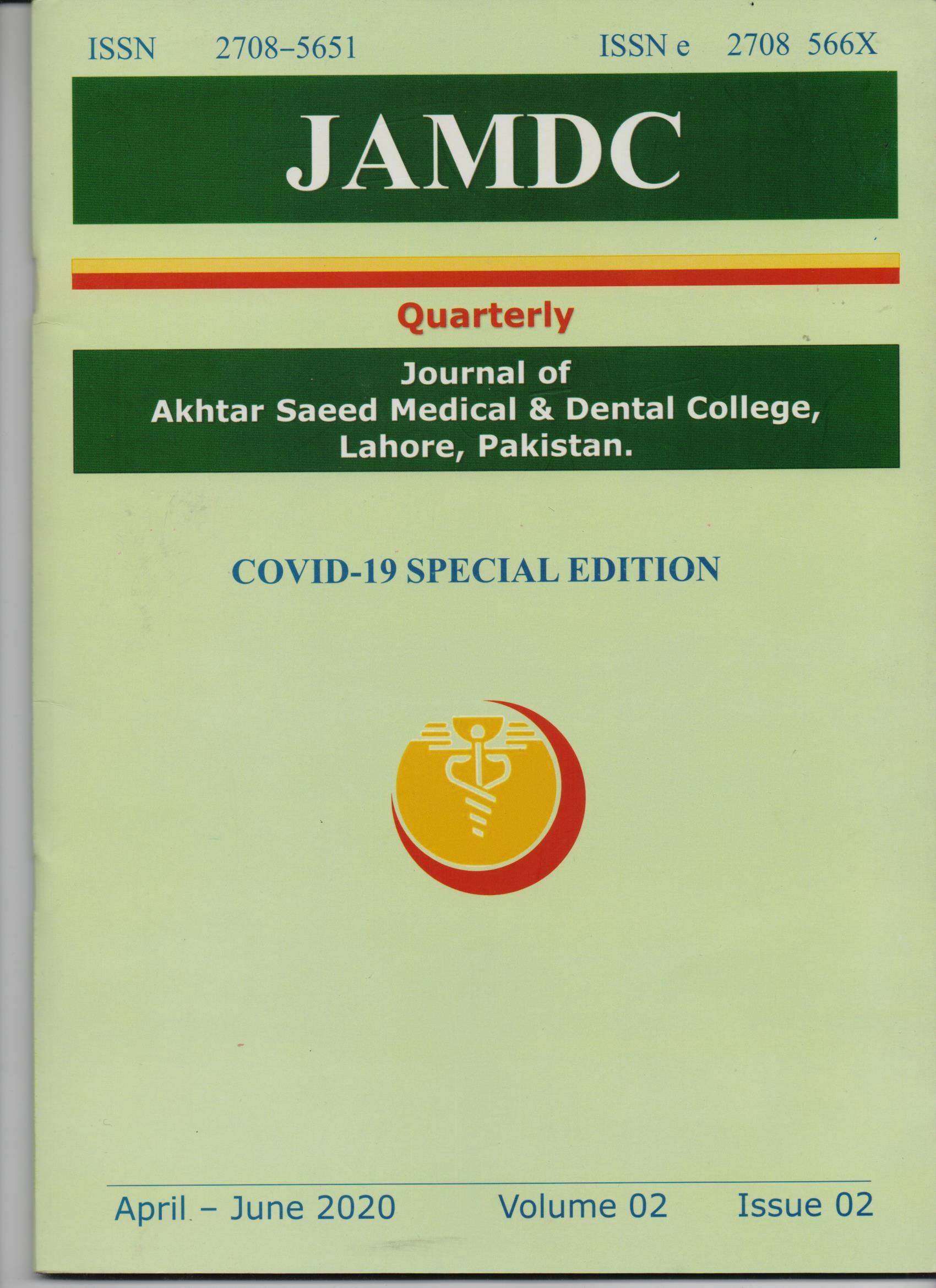PRESENTATION OF PREGNANT WOMEN DURING COVID -19 PANDEMIC IN FAROOQ HOSPITAL, WEST WOOD
Main Article Content
Abstract
A descriptive study to evaluate fetomaternal complication in pregnant patients admitted with either symptoms of COVID-19 or with other obstetric indications, who were tested positive for SARS-COV 2.
Material and Methods:
Study was conducted from 1st March 2020 to 30th June 2020 in the department of gynaecology of Farooq Hospital Westwood Branch Lahore. A total of 262 pregnant patients were admitted for observation and emergency procedures out of which 28 patients were tested positive for COVID-19. Patient’s demographic characteristics, COVID symptoms, obstetrics symptoms and maternal complications were noted. Mode of delivery, fetomaternal complications and fetal outcomes of delivered patients were recorded. The antenatal patients in various trimesters were managed conservatively and are still under follow up. The data was analyzed by SPSS version 20.
Results:
Out of 28 tested positive patients, 19 (67.8%) have delivered till now and the remaining 9 (32.1%) are still under follow-up. The mean age of pregnant patients was 28.46 ±4.07. Ten (35.7%) were primigravida. Most of the patients were in 3rd trimester of pregnancy between 35-42 weeks (n=17, 60.7%) at the time of presentation. The mean gestational age at presentation was 31.72±9.55. Eight patients (28.5%) were asymptomatic and remaining 20 (71.5%) were having mild symptoms including fever (n=5, 17.8%), cough (n=4, 14.2%), myalgia (n=2, 7.14%) and headache (n=1, 3.5%). Obstetrical presentation was spontaneous labour (n=8, 42%) and preterm labour (n=8, 42%), 3(15.7%) had intrauterine growth retardation (IUGR) and 1(5.26%) had preterm prelabour rupture of membranes. Out of undelivered 9 patients, 2 (22.2%) were in 1st trimester, 3 (33.3%) in the second trimester and 4 (44.4%) in the third trimester. There is a history of contact in 8 of these patients. Out of 19 delivered patients, 12(63.1%) had cesarean sections, 6 (31.5%) had a normal delivery and 1 (5.26%) expulsion. Regarding the fetal outcome of 19 patients, 10 (52.6%) were delivered at term, 8 (42.1%) was preterm and one expulsion. Five newborns (26.3%) had low birth weights (≤2.5kg). Four newborns (21.05%) developed respiratory distress syndrome and were admitted in the neonatal intensive care unit. There was no case of maternal and perinatal mortality.
Conclusion:
Universal testing of all pregnant females helped in identification of asymptomatic carriers and isolation of those cases helped in reducing spread of disease. Mild cases of COVID-19 infection were with good maternal and perinatal outcome

